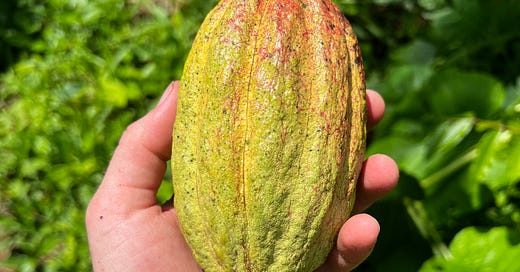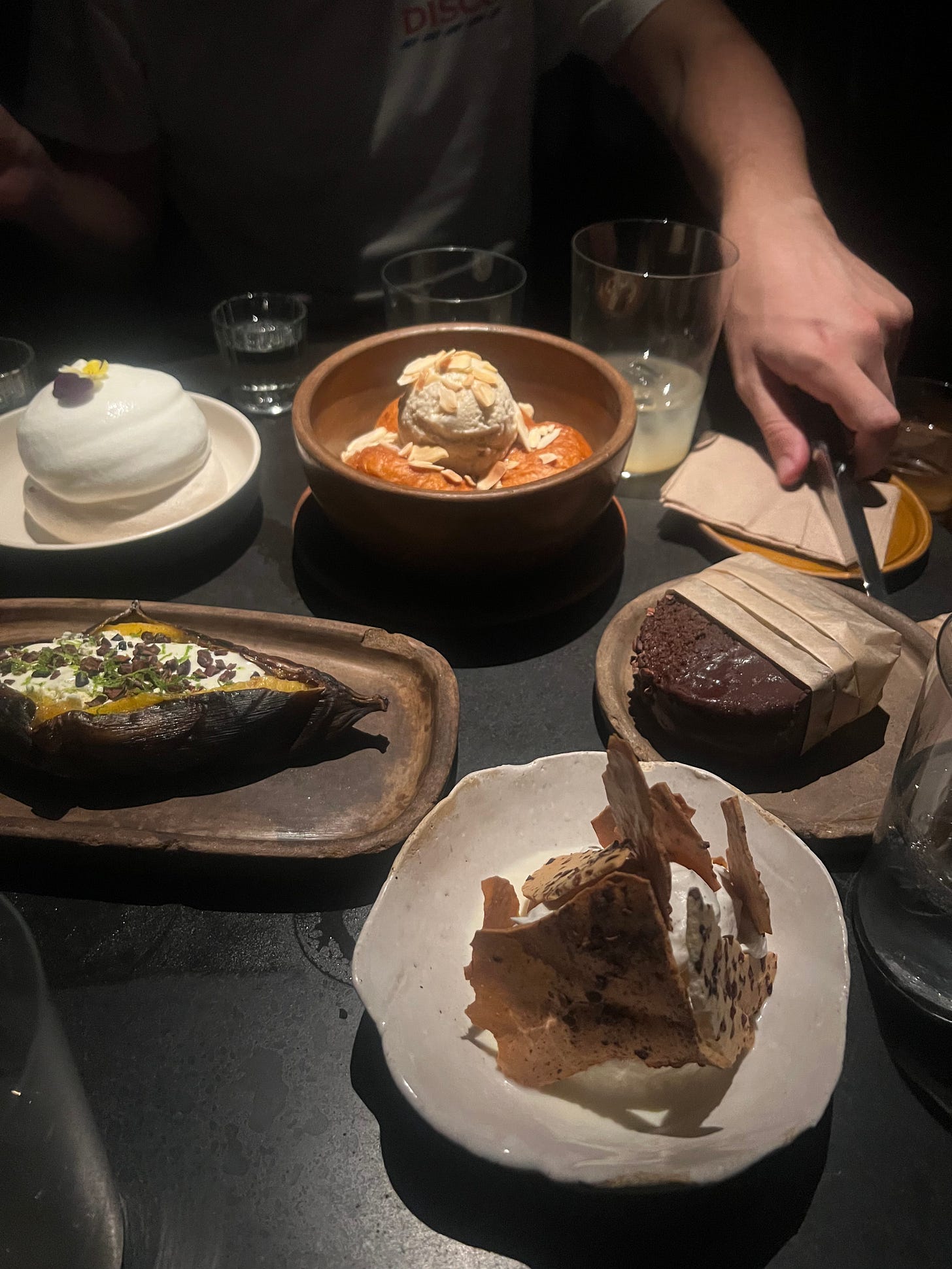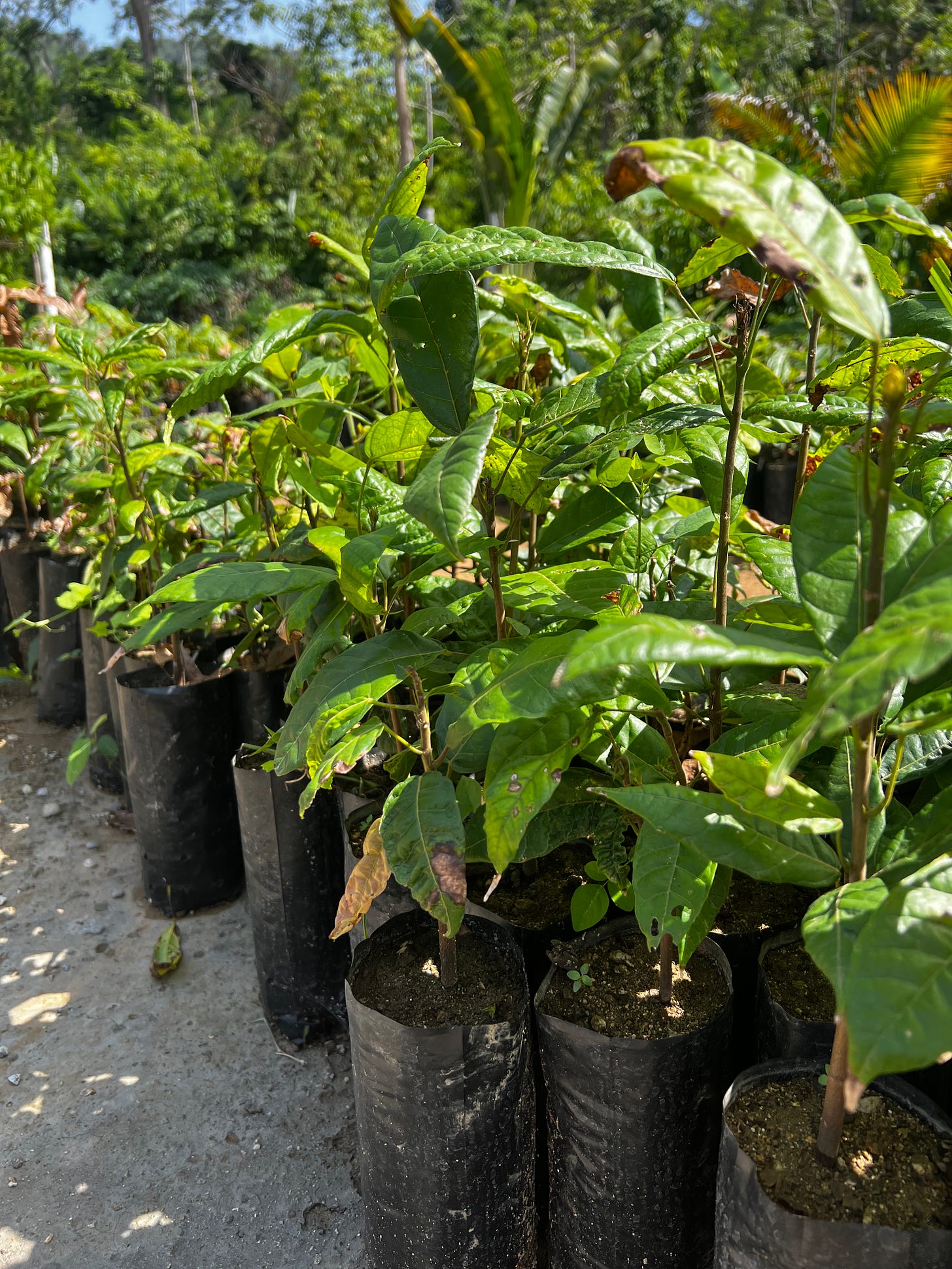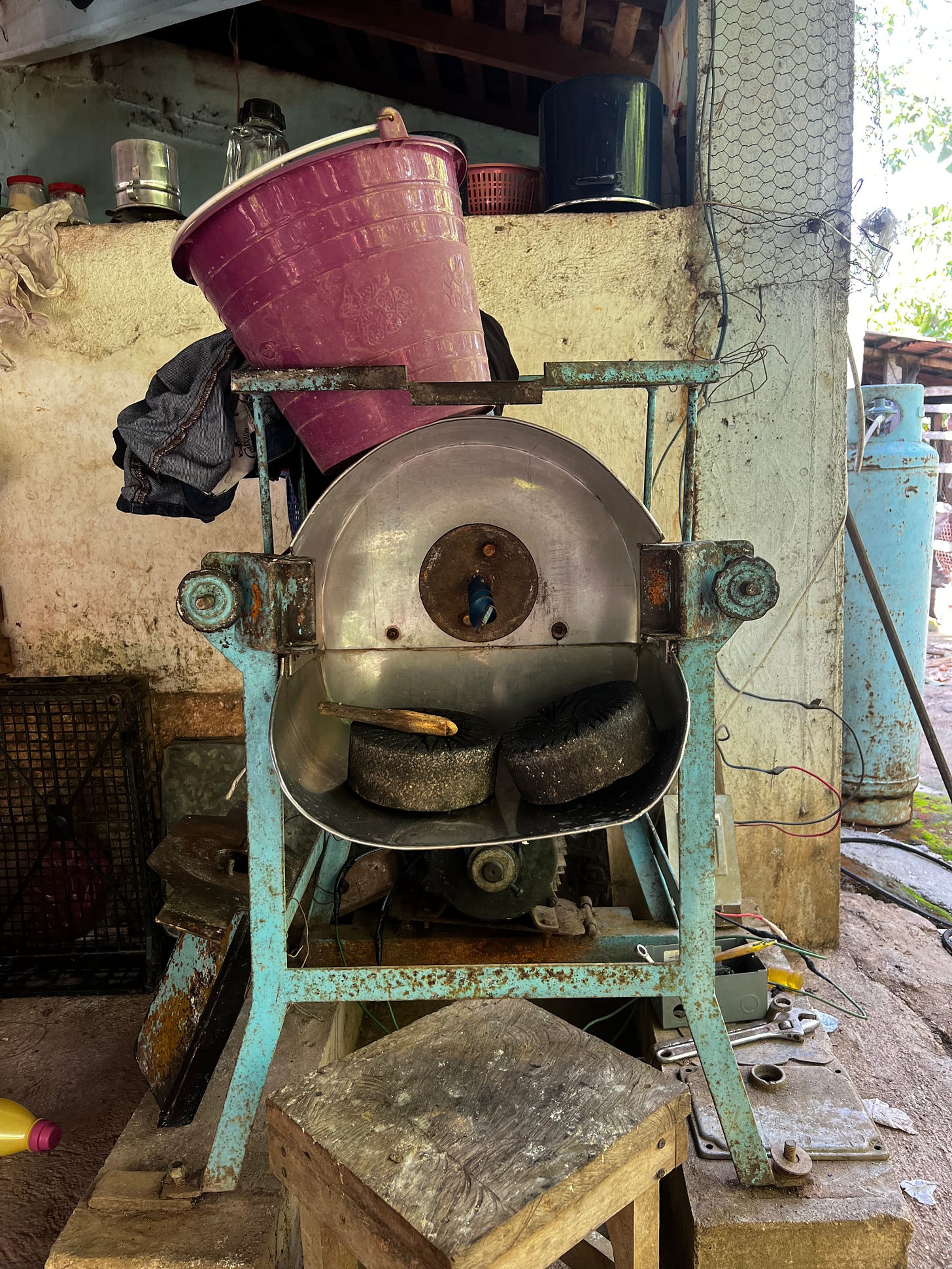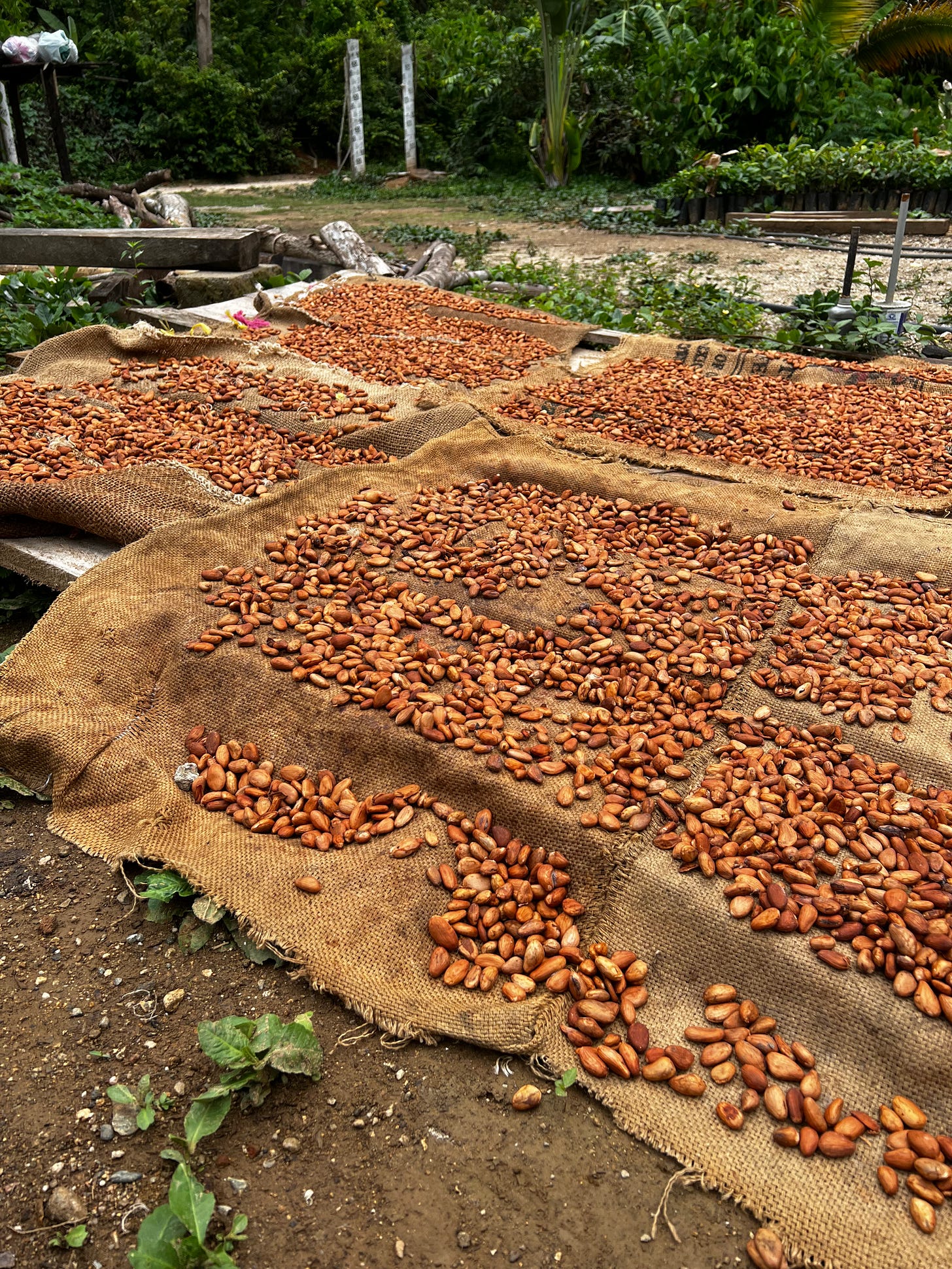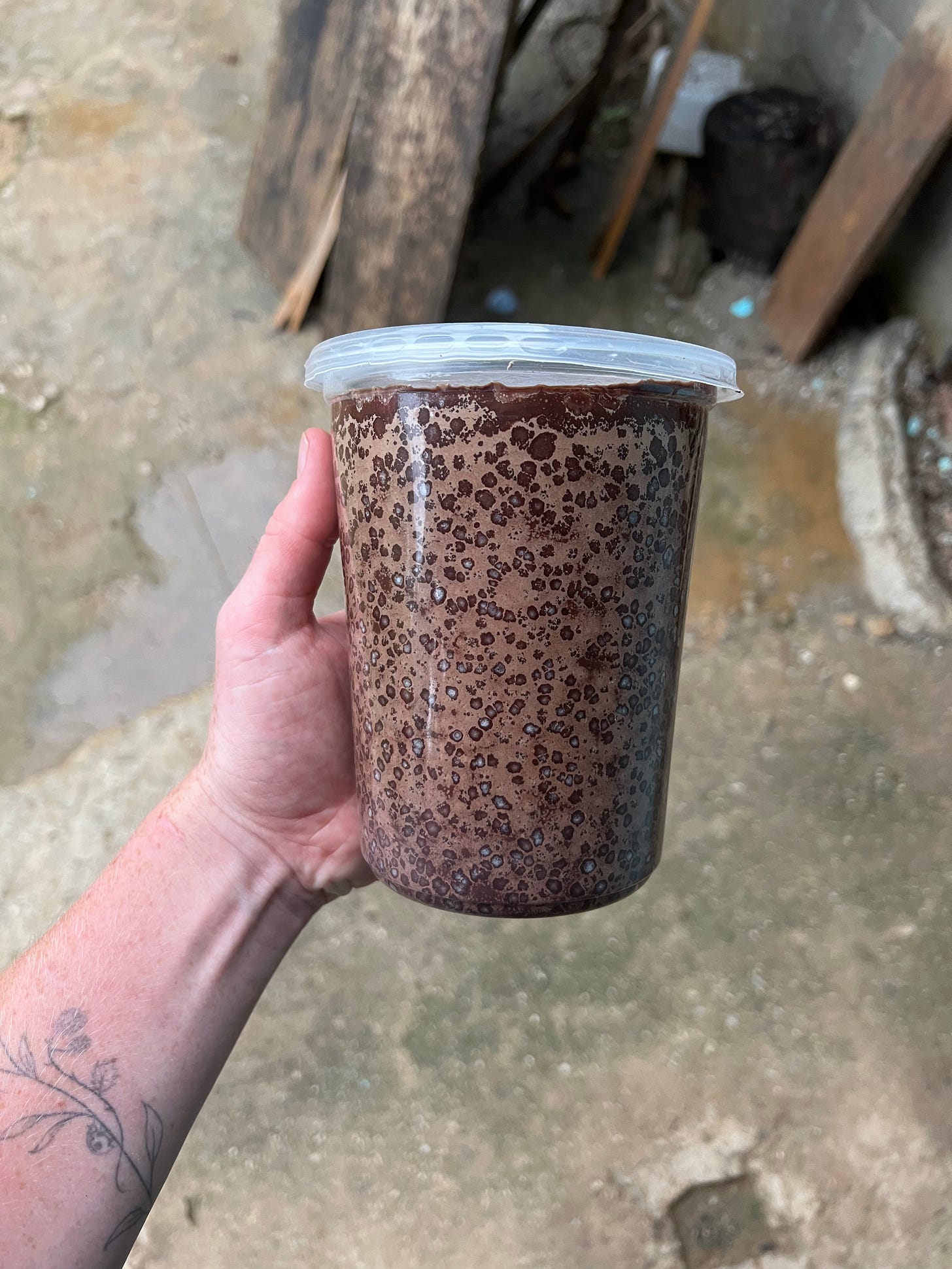Cacao Farming and a Recipe for Chocolate Cake
A little insight into cacao production, plus a choc cake recipe that I think you’ll like
What I’m reading: Ruby Tandoh’s entire series on ice-cream in London for Vittles. Ruby tasted 343 ice-creams in order to come up with an ice-cream index and guide for London dwellers and visitors. I’m a huge fan.
What I’m listening to: Out of Time. I’m having a Blur moment
What I’m eating: the most incredible meal at Ticuchi in Polanco, Mexico City. I failed to take any pictures of the mains but here’s the desserts, to give you an idea.
Chocolate has always been one of my favourite flavours. My favourite chocolate bar is a Wispa (from the fridge), since you asked. Anything with a warm/malty/sweet flavour profile has me firmly in a chokehold: chocolate, coffee, caramel, nuts, praline, etc. I love mint choc chip ice-cream. I love hot chocolate. I love chocolate chip cookies. I love pain au chocolat. I struggle to choose anything else when there is chocolate on the menu. Basic? Maybe. Delicious? Absolutely.
In my last few years working as a pastry chef/baker, I’ve had the opportunity to work with a lot of really good quality chocolate - most notably, Irish bean to bar brands such as Nearynógs and Hazel Mountain. I also love Valrhona Jivara (40%) and Satilia Noire (62%). Callebaut is a super reliable option too, and in the UK, Pump Street and Original Beans are great.
So when I came to Mexico, I decided to go and volunteer on a cacao farm for a couple of weeks, to learn more about cacao production at the source. Unfortunately, I had a fairly unpleasant experience and only stayed a week instead of two - and I spent that week digging holes to sow cacao seeds, so I didn’t actually see the process. I did, however, gain very strong forearm muscles, countless mosquito bites and a farmer’s tan that will probably take me several months to rectify. I haven’t given up, though: I’m currently in Oaxaca city and I’m hoping to learn more about cacao and chocolate, preferably in safer/more enjoyable conditions. Anyway, here’s a little background on bean varieties and the artisan cacao manufacturing process, and at the end, for paid subscribers, I’ve included a recipe for the chocolate cake I made for this week’s mini pop-up at Ella y Gatsby in Mexico City.
Bean varieties
The farm I was working on produced three different varieties of cacao, which were blended to produce the final product (a 100% cacao paste sold for drinking or baking). The cacao tree (or Theobroma cacao) is native to Central and South America, but is grown worldwide now in Africa, Asia and Oceania. Forastero dominates world cacao production, as it is high yielding and has a simple flavour profile that is easy to blend for mass produced chocolate. Criollo is much rarer, and has many heirloom strains that are in high demand among premium chocolate manufacturers. Criollo tends to have a fruity, aromatic flavour profile, with low tannins. Trinitario is a hybrid of Forastero and Criollo, and as the name suggests, is native to Trinidad, where, after a hurricane wiped out almost all cacao crops in the 18th century, it was devised as a more resilient crop with the robustness of Forastero and the delicate flavour of Criollo.
Manufacturing process
First, the cacao beans are harvested from the trees. Then, the seeds are removed and fermented for anywhere from 3-10 days. The beans are then dried - in this case, spread out, and left in the sun until all moisture has evaporated, but in other cacao producing countries, sometimes beans are dried next to a fire, which gives the cacao a smoky flavour. The fermented beans are then dried in the sun, either on wooden boards or bamboo mats, or in this case, on hemp sacks. Once dry, the beans are cleaned and roasted, before the shells are separated from the nibs (this is called “winnowing”). These nibs are ground to produce a “cocoa mass” (or paste or liquor), which is solid at room temperature.
This is where the process ends on the farm I was working at, but to produce chocolate, this cocoa mass can be blended with cocoa butter, sweetener, oil or milk. To produce the final product, this chocolate is tempered, in order to stabilise the cocoa butter and produce a smooth, shiny chocolate that snaps when broken.
What’s the difference between cocoa and cacao?
Cacao refers to the raw product, either the tree, pod or seeds, while cocoa is the product after it has been fermented, dried and processed. To complicate matters, there’s only one word in Spanish (cacao) for both products, but in English-speaking countries, you’ll normally find that anything labelled “cacao” is less processed, and refers to the plant in its rawer form. Since cacao is not exposed to as extreme temperatures as cocoa, it tends to taste more bitter, and has higher nutritional value. Cacao products are known for their high antioxidant levels (from flavanols), as well as iron, fibre and magnesium - and have health benefits such as reducing inflammation and improving heart health - plus the farmer I worked for claimed that it helped him control his diabetes.
Recipe: Chocolate Cake
Keep reading with a 7-day free trial
Subscribe to Tastebuds to keep reading this post and get 7 days of free access to the full post archives.


